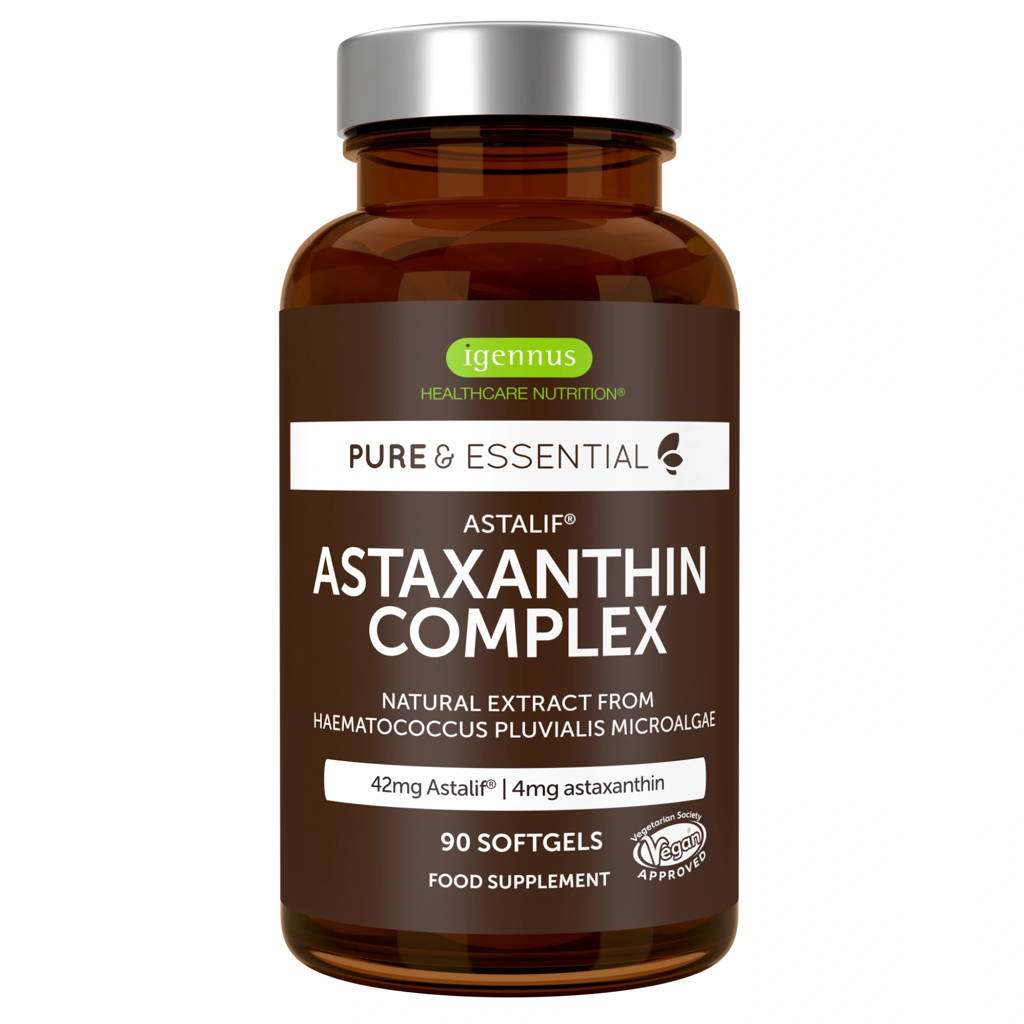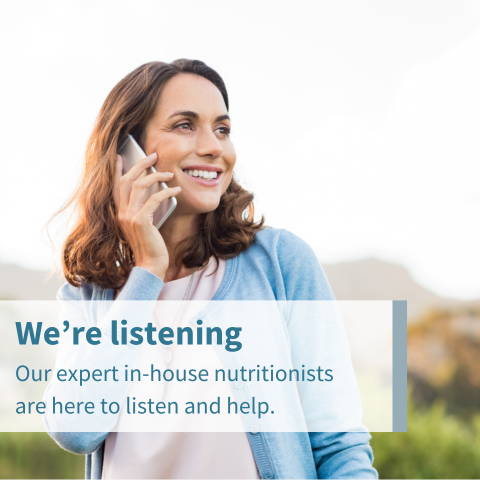For those who aren’t familiar with astaxanthin (as-ta-xan-thin), allow me to acquaint you with one of nature’s most potent antioxidants, and the many reasons why astaxanthin would be a fabulous addition to any supplement regime. The latest research shows promising results for those everyday concerns such as ageing skin, low immunity, tiredness and fatigue, aching joints, low fertility, poor cognitive function and below-par exercise performance. I could go on, but I feel I may have already caught your attention.
What is astaxanthin?
Astaxanthin is a bright red carotenoid pigment (natural colour) derived from haematococcus pluvialis (H. pluvialis), an algae with the highest levels of astaxanthin, accumulated in response to stressors from its environment, such as starvation, high levels of salt, high temperature and radiation. The accumulation of astaxanthin turns the algae from green to red, and is responsible for the bright pink-red colouring of many marine animals such as salmon, crab and lobster and the brightly coloured feathers of flamingos, which obtain astaxanthin through their diet. Aside from its wonderful colouring, its main action is that of an antioxidant and, as such, protecting algae from environmental stressors.
HOW ASTAXANTHIN WORKS AS AN ANTIOXIDANT
Similar to algae, the human body is also subject to environmental stressors, though ours include poor diet, pollution, stress, exercise, smoking, alcohol, drug use (prescription and non-prescription) and so on. The body also has inbuilt antioxidant capabilities which it works hard to keep in balance; however, an over-burdened body can lead to oxidative stress, which in turn, can lead to cellular damage. Long-term, oxidative stress is associated with major health conditions including cancer, autoimmune conditions such as rheumatoid arthritis, neurological conditions including Alzheimer’s and Parkinson’s disease, and cardiovascular disease, as well as ageing, poor fertility health and inflammation. Whilst there are many things you can do to reduce the causes of oxidative stress, like eating a healthy diet, purchasing organic food, getting adequate sleep, not smoking, using chemical-free cosmetics and cleaning products, other sources of oxidation, such as breathing and exercising, cannot be avoided.
ASTAXANTHIN IS THE KING OF ANTIOXIDANTS
Given the everyday exposure to free radicals, it becomes important to consume a diet rich in antioxidants from foods such as spices and herbs, cocoa, nuts and berries, artichokes, beans and green tea, which are all high on the oxygen radical absorbance capacity (ORAC) table, a measure of antioxidant capacity. Astaxanthin has an ORAC value of 2,822,200, making it 293x as potent as wild blueberries, a well-known antioxidant-rich food. Furthermore, its antioxidant properties make it 6,000x more potent than vitamin C, and 550x more potent than vitamin E. (1)
Antioxidant-rich foods
ORAC value (measure of antioxidant capacity)
Astaxanthin
2,822,200
Ground cloves
29,0283
Dried oregano
175,295
Turmeric
127,068
Cocoa powder
55,653
Wild blueberries
9,621
HOW ASTAXANTHIN WORKS ON A CELLULAR LEVEL
Astaxanthin works in several ways to combat free radicals. Like all antioxidants, astaxanthin works in the body by donating a chemical group to free radicals (compounds that have lost a chemical group and without it become unstable and lead to oxidative damage). When many antioxidants do this, they themselves become pro-oxidant unless they are recycled by another antioxidant; astaxanthin, importantly, has an unlimited ability to provide chemical groups without itself becoming a pro-oxidant. Astaxanthin also works by calming free radicals, absorbing the negative energy they emit. Fat-soluble antioxidants tend to protect the inner wall of the cell membrane, whilst water-soluble antioxidants protect the outer wall of the cell membrane. However, with its unique structure, astaxanthin is able to span the cell membrane, thus providing antioxidant protection to both the inner and the outer wall, as well as the intra-membrane space. All of these factors make astaxanthin ‘the king of antioxidants’.
THE BENEFITS OF ASTAXANTHIN - A POTENT ANTIOXIDANT AND ANTI-INFLAMMATORY
High levels of oxidative stress can lead to inflammation; as a health-oriented company, we value the ability of nutritional science to help support the healthy balance of inflammation within the body, because inflammation underpins most health conditions. Studies have successfully shown astaxanthin’s ability to not only reduce biomarkers associated with oxidative stress but also biomarkers associated with inflammation. As such, the antioxidant and anti-inflammatory properties of astaxanthin have shown promise in many areas of health. Here is an overview of some of the areas of research:
Astaxanthin for exercise – Exercise leads to the production of reactive oxygen-nitrogen species (RONS) within the muscle, which promotes improvement in athletic performance. Without the body’s own antioxidant capabilities, RONS can cause a state of oxidative stress, and the body can become overloaded during times of vigorous exercise, thus leading to oxidation, damaging molecules and potentially a negative impact on physiological function. Astaxanthin is not only a powerful antioxidant, but as it also upregulates the body’s own antioxidant capabilities, it helps to rebalance the oxidative stress caused by an over-production of RONS, with 3-5 weeks of astaxanthin supplementation shown to improve exercise metabolism, performance and recovery. (2)
Astaxanthin for ageing skin – If there was ever a supplement we would all be taking, it would be an anti-ageing one. Skin ageing occurs over time, but the ageing process is accelerated by certain lifestyle factors, and exposure to agents which cause oxidative stress in the skin, like, for example, smoking, drinking alcohol, UV exposure from the sun, and poor diet, amongst others. Studies illustrate that supplementation and topical application of astaxanthin improved the appearance of ‘crow’s feet’, improved elasticity, skin texture and moisture content over 8 weeks. (3) Who doesn’t want to keep that fresh-faced and crease-free complexion for longer?
Astaxanthin for neuroprotection – Astaxanthin is a fat-soluble molecule, enabling it to pass the blood-brain barrier where it can exert its beneficial effects neurologically. Studies have demonstrated that for those who have supplemented with astaxanthin prior to a stroke, there is reduced production of reactive oxygen species (ROS), the build-up of which can lead to tissue damage and therefore loss of function, following a stroke. Furthermore, supplementing with astaxanthin following a haemorrhage may alleviate early brain injury with its ability to upregulate the body’s own antioxidant capabilities, as well as exert anti-inflammatory effects. (4)
Astaxanthin for cardiovascular disease – Studies suggest that taking astaxanthin before an ischaemic event, such as a stroke, provides protection to the muscle tissue of the heart. (5) It has also been shown to have a positive effect on cholesterol levels by decreasing overall triglycerides and increasing HDL (‘good’) cholesterol, which provides protection against atherosclerosis as HDL cholesterol carries LDL (‘bad’) cholesterol back to the liver to prevent it from forming plaques in the arteries. (6)
Astaxanthin for eye health – Studies suggest astaxanthin protects the cells of the eye following an ischaemic attack (7), and that it also inhibits retinal damage following white light exposure. (8) A 6mg daily dose of astaxanthin for 4 weeks has also been shown to improve the function of the eye in middle-aged participants with eye strain complaints. (9)
Astaxanthin for immunity – Supplementing with astaxanthin has been shown to boost the immune response and reduce DNA damage when exposed to infection. (10)
Introducing Pure & Essential AstaPure Astaxanthin
Many studies have shown that supplementing with as little as 2mg of astaxanthin per day reduced oxidative DNA damage by 40% after 4 weeks of supplementing. (10) A single softgel serving of Pure & Essential Astaxanthin Complex contains 4mg of active astaxanthin to provide daily antioxidant protection for everyday health, with 1 bottle containing a 90-day supply. The astaxanthin content is the equivalent of 1.25 portions of wild sockeye salmon or 5 portions of farmed Atlantic salmon. To increase absorption, we have added fat in the form of olive oil and recommend taking your supplement after a meal to further enhance the bioavailability. Under the advice of a healthcare practitioner, you can safely increase your dosage to 3 softgels per day, to provide more therapeutic support.
Comparing astaxanthin supplements
When comparing astaxanthin supplements, be aware that there is a difference between ‘bulk oil’ and active astaxanthin. Bulk astaxanthin oil contains only 10% active astaxanthin, therefore we have used 42mg of bulk oil to guarantee 4mg of active astaxanthin. Furthermore, we use natural oil derived from H. Pluvialis algae rather than a synthetic form, which would require anywhere from 20-50 x more astaxanthin to receive the same benefits as that from H. Pluvialis algae. We have also left in, rather than extract, the trace amounts of other carotenoids, including lutein and zeaxanthin, that naturally occur in H. Pluvialis algae-derived astaxanthin, as these also bring additional antioxidant benefits.
Since launching Astaxanthin Complex, we have launched High Absorption Omega-3 Wild Fish Oil & Concentrated Vegan Omega-3 harnessing the powerful antioxidant capabilities of astaxanthin in these formulas to protect the delicate oils from oxidation.
References
- Nishida Y., Yamashita E., and Miki, W. (2007). ‘Quenching activities of common hydrophilic and lipophilic antioxidants against singlet oxygen using chemiluminescence detection system’, Carotenoid science, 11, pp. 16-20.
- Brown D. R., Gough L.A., Deb S.K., et al. (2018). ‘Astaxanthin in exercise metabolism, performance and recovery: a review’, Frontiers in nutrition, 4 (76), pp. 1-9.
- Tominaga K., Hongo N., Karato M., et al. (2012). ‘Cosmetic benefits of astaxanthin on humans subjects’, Acta biochimica polonic, 59 (1), pp. 43-47.
- Haijian W., Huanjiang N., Anwen S., et al. (2015). ‘Astaxanthin as a Potential Neuroprotective Agent for Neurological Diseases’, Marine drugs, 13 (9), pp. 5750-5766.
- Fassett R.G. & Coombes J.S. (2011). ‘’Astaxanthin: A Potential Therapeutic Agent inCardiovascular Disease’, Marine drugs, 9 pp. 447-465.
- Yoshida H., Yanai H., Ito K., et al. (2010). ‘Administration of natural astaxanthin increases serum HDL-cholesterol and adiponectin in subjects with mild hyperlipidemia’, Atherosclerosis, 209 (2), pp. 520-523.
- Otsuka T., Shimazawa M., Inoue Y., et al. (2016). ‘Astaxanthin Protects Against Retinal Damage: Evidence from In Vivo and In Vitro Retinal Ischemia and Reperfusion Models’, Current eye research, 41 (11), pp. 1465-1472.
- Tomohiro O., Masamitsu S., Tomohiro N., et al. (2013). ‘The Protective Effects of a Dietary Carotenoid, Astaxanthin, Against Light-Induced Retinal Damage’, Journal of pharmacological sciences’, 123, pp. 209-218.
- Kajita M., Tsukahara H. & Kato M. (2009). ‘The Effects of a Dietary Supplement Containing Astaxanthin on the accommodation Function of the Eye in Middle-aged and Older People’, Translated from medical consultation and new remedies, 46 (3), pp. 1-7.
- Park J.S., Chyun J.H, Kim Y.K, et al. (2010). ‘Astaxanthin decreased oxidative stress and inflammation and enhanced immune response in humans’, Nutrition and metabolism, 7 (18) pp. 1-10.









